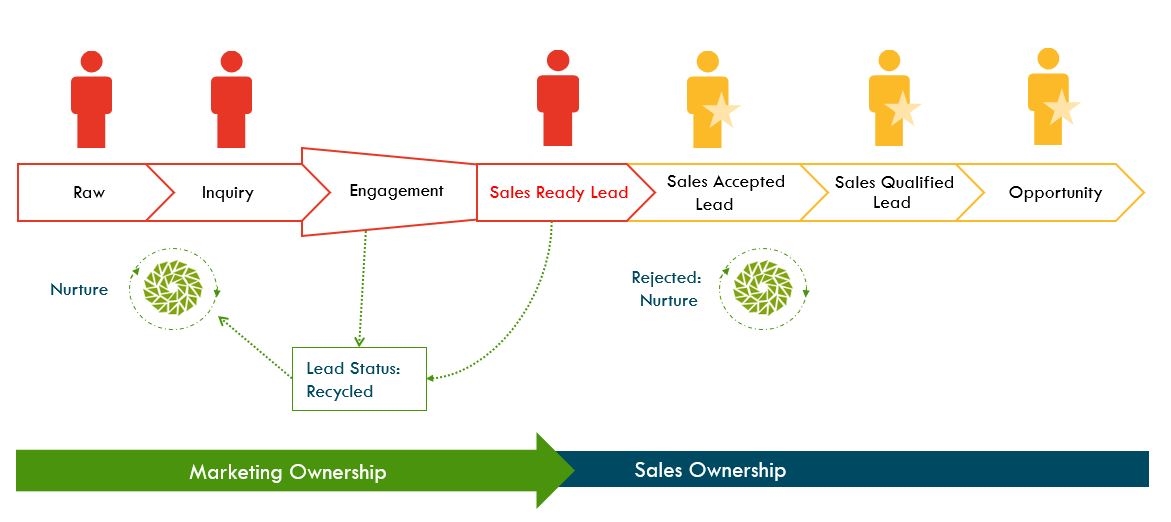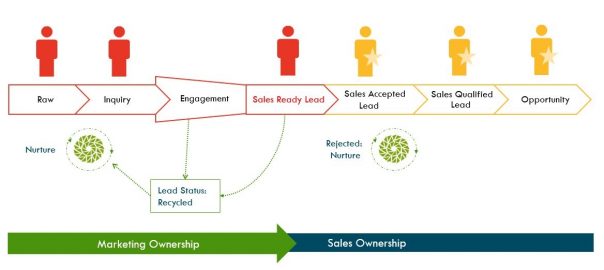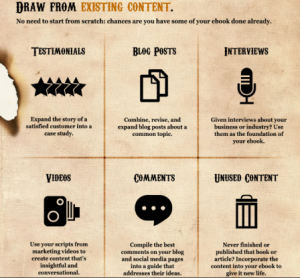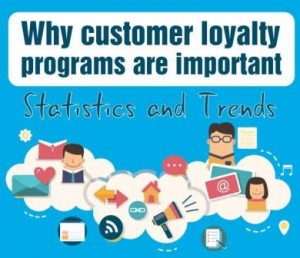— August 15, 2018

After Marketing and Sales come to an agreement on what makes a sales qualified lead (stage 1 of lead management), it is now time to seek agreement on the labels and definitions of customer acquisition and retention statuses (stage 2). This enables lead funnel management, captures lead life cycle in a common language that everyone understands and allows you to be predictive about revenue based on pipeline.
A lead becomes “sales ready” through a series of stages – a funnel that should be common between Sales and Marketing.

You have already defined your sales qualified lead, but there are other stages that must also be defined. Marketing and Sales must find common ground here if they are to work together efficiently. Sample lead stage definitions include:
- Raw: You have an IP address but cannot connect it to an actual person.
- Inquiry: You have captured an email through engagement (they have made themselves known).
- Engagement: The lead is doing something.
- Sales Ready Lead: The lead has shown enough interest (activity) to be marketing qualified or has filled out a “Contact Us” form and meets your established demographic minimum.
- Sales Accepted Lead: Sales has accepted the lead from Marketing and agrees to review it within an established amount of time (for example, 24 hours).
- Sales Qualified Lead: A lead is recognized by sales as having a viable need and is qualified by Sales. Sales can also reject and recycle leads.
- Opportunity: This is an opportunity with a revenue value. Link the opportunity to the primary contact.
- Rejected: This lead is non-targeted. It will never be a customer. The Rejected Reason field must be filled out.
- Recycled: The lead does not meet sales criteria and is sent back to marketing for re-work.
There is a difference between stages and statuses. Stages represent an executive level view of the common funnel and broadly represent where and how a customer is engaging with your company. Think top, middle and lower part of the funnel (or early, middle and late stage).
Statuses are the detailed operational views of where and how a customer is interacting with your company. These are represented in the technology (both marketing automation and CRM).
It is the lead statuses that bring the marketing automation platform and the CRM together. Otherwise the systems are fighting each other. Now that the systems are aligned, Marketing and Sales have visibility on the follow up actions needed on leads (rejecting, recycling and so on). Incorporating a strategy for creating a cohesive set of ‘custom labels‘ can further enhance this alignment, ensuring a more precise classification of leads and facilitating smoother interactions between the platforms. This refinement aids in establishing a common language between teams and contributes to the predictability of lead flow, thereby boosting efficiency and efficacy for both Sales and Marketing.
A specific value is assigned to a sales qualified lead. This value is built into the MAP, which triggers the status change and kicks the qualified lead over to Sales.
This system provides a wealth of value both to Sales and Marketing as well as the Executive team. Not only is there more transparency between all teams, there is also a common language between the teams and a predictability of lead flow. Sales and Marketing can work more efficiently and effectively, and productivity increases while budget management gets easier.
It might still be difficult to sell the value of a funnel with lead stages and statuses that are common between Sales and Marketing. Here is a suggested plan of action:
- Understand the current sales funnel definitions and use.
- Review current marketing stages, CRM statuses and the state of one common funnel.
- Determine the gap between the two.
- Meet with key stakeholders to share what was learned and take feedback.
- Create one common funnel.
- Gain agreement with key stakeholders.
- Implement with/in process and technology.
It is important that leadership is on board. Getting Sales in the room to work together on creating a common definition of lead statuses could be difficult, and having support from the executive team will be helpful.
Reaching an agreement between Sales and Marketing on what constitutes different degrees of engagement will also be difficult. The best solution for that is bringing both teams into the same room together and hashing it out until an agreement is reached.
Implementing these new definitions will also be a challenge. Sales might act on leads before they reach SQL status. Both Sales and Marketing must be educated on the new definitions of lead stages, and stakeholders must hold people accountable for doing something with a qualified lead.
If you can show the executive team that there is a strong business case for change (that marketing should contribute to the sales pipeline), executives will begin to hold people accountable for new behaviors and there will be executive support from Marketing to focus on quality instead of quantity.
Business & Finance Articles on Business 2 Community
(126)





